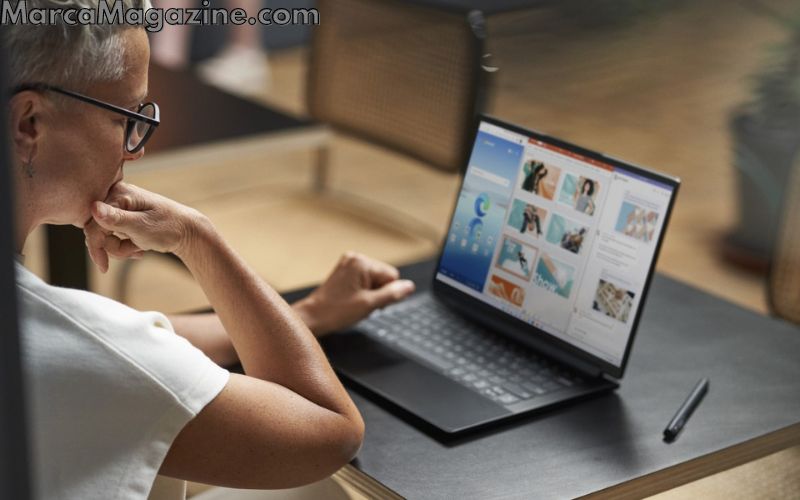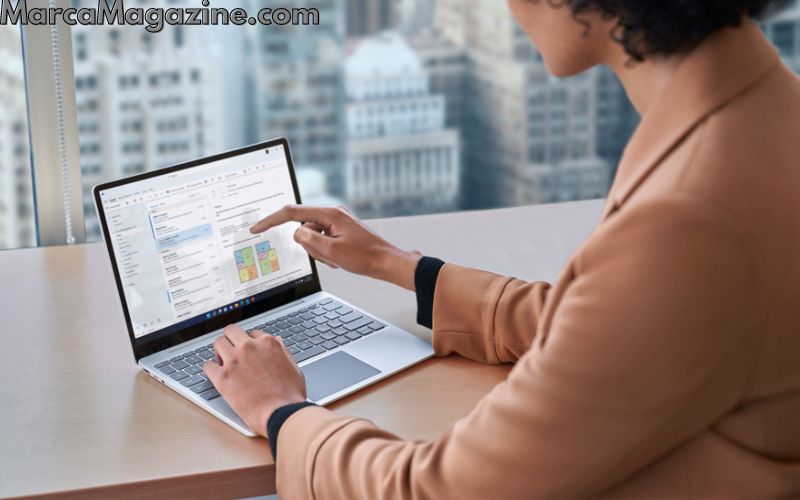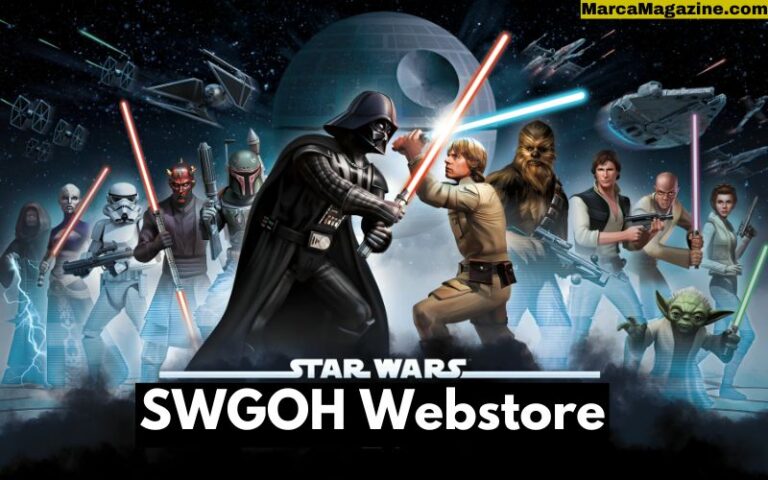Technology is rapidly evolving, and the way we interact with computers and devices has changed dramatically. Gone are the days when traditional keyboard-and-mouse setups were the only methods to interact with a device. In the current era of touch-enabled devices and stylus-driven interaction, Microsoft Ink—accessible via the official site at **https://www.microsoft.com/ink**—is at the forefront, revolutionizing how we write, draw, annotate, and even collaborate on digital platforms.
Microsoft Ink, often referred to as Windows Ink, is a suite of software features designed specifically for stylus or pen input on Windows devices. The technology is deeply integrated into the Windows operating system, making it a native part of many applications and enhancing the overall user experience, whether you’re taking notes, making quick annotations, or even engaging in high-level professional design work.
In this article, we will delve into how Microsoft Ink (accessible at https//www.microsoft.com/ink is transforming user interactions across various sectors—from professional industries to casual users—and the benefits it brings in terms of productivity, creativity, and precision.
Introduction to Windows Ink and Microsoft Ink Workspace
Windows Ink, a key feature of Microsoft Ink, was first introduced with the Windows 10 Anniversary Update in 2016. Microsoft developed this feature to make stylus-based computing more accessible, aiming to replicate and improve on the natural experience of writing or drawing on paper. The idea behind Windows Ink was simple yet profound: enhance the way users can interact with their devices using a stylus, providing more precise and intuitive control.
The Windows Ink Workspace is a central hub that provides access to apps designed to work with stylus input. You can quickly access the Sketchpad, Sticky Notes, and Screen Sketch tools, making it easier to write notes, sketch ideas, or annotate screenshots. This feature can be found on all Windows devices that support pen input, and it is a perfect showcase of what Microsoft Ink can achieve.
For more details about these tools, you can explore further at https://www.microsoft.com/ink.
Key Tools in Windows Ink Workspace

1. Sticky Notes
With Sticky Notes, users can quickly jot down reminders, ideas, and other short notes. Unlike traditional sticky notes that clutter your physical space, these digital notes can be intelligently managed and even integrated with Cortana, Microsoft’s virtual assistant. By visiting https//www.microsoft.com/ink, you can explore the full range of Sticky Notes’ capabilities, from basic text entry to automated reminders and enhanced productivity features.
2. Sketchpad
The Sketchpad is a versatile drawing application within Windows Ink. It allows users to express themselves freely, whether by sketching ideas, jotting down brainstorming sessions, or even producing more elaborate designs. The Sketchpad comes with various tools such as pens, highlighters, and rulers to assist with precision. For those who want to use Sketchpad to its full potential, check out more about it on https://www.microsoft.com/ink.
3. Screen Sketch
Another standout tool in Microsoft Ink is Screen Sketch, which allows users to take a screenshot of their desktop and annotate it. This tool is particularly helpful for collaborating with team members, as you can highlight areas of a document, image, or website and share your annotations quickly. Explore more about this powerful feature at https//www.microsoft.com/ink.
How Microsoft Ink Enhances Productivity and Creativity
One of the major selling points of Microsoft Ink is its ability to boost both productivity and creativity. Whether you’re a student, a professional, or a creative artist, Microsoft Ink’s capabilities can enhance how you interact with your device and help you work more efficiently.

1. For Professionals
Professionals across industries are turning to stylus-based interactions, using Microsoft Ink to streamline their workflow. In sectors like architecture, engineering, and graphic design, precision is paramount. Architects and designers can take advantage of software like AutoCAD or Adobe Photoshop, which integrate Windows Ink to allow for fine-tuned control over sketches, blueprints, or designs.
In office environments, Microsoft’s productivity suite, Office 365, offers robust support for stylus input. The Ink Editor in Word lets users easily make edits by circling text to select it or striking through text to delete it. Similarly, PowerPoint allows for real-time annotations during presentations, adding a layer of interactivity. Discover more professional applications of Microsoft Ink by visiting https://www.microsoft.com/ink.
2. For Educators and Students
Microsoft Ink is also widely embraced in the educational sector. Teachers can use stylus-based input to create dynamic lessons, annotate lecture notes, and use Microsoft Whiteboard to collaborate with students in real time. This real-time collaboration extends to students as well, who can work together on assignments, draw out concepts, and take detailed handwritten notes.
Additionally, Windows Ink enhances accessibility for students with learning disabilities. It provides tools to convert handwriting into text, empowering students who may struggle with typing. The digitization of notes also allows students to organize and sync their work across devices. For more information on how Microsoft Ink benefits education, visit https://www.microsoft.com/ink.
3. For Artists and Designers
For artists and designers, Microsoft Ink is a game-changer. Drawing applications like CorelDRAW and Adobe Illustrator integrate Windows Ink, allowing artists to take advantage of features like pressure sensitivity and tilt detection for more precise strokes and brush effects. The Surface Pen is widely lauded for its responsiveness, and paired with Windows Ink, it delivers a natural, pen-on-paper feel.
Moreover, designers can explore tools like Screen Sketch and Sketchpad for concept drawings, mockups, or brainstorming. Microsoft Ink not only makes drawing digitally more accessible but also provides an extra layer of control and customization. You can explore how Microsoft Ink is transforming the world of design by visiting https://www.microsoft.com/ink.
Hardware Integration: Devices Supporting Microsoft Ink
A key part of the Microsoft Ink ecosystem is its hardware. The technology is designed to work seamlessly with a range of devices that support stylus input. The most famous of these is the Surface Pen, compatible with the Surface Pro, Surface Book, and Surface Studio. These devices feature pressure sensitivity, tilt detection, and palm rejection to make the digital pen experience feel as close to natural writing and drawing as possible.
However, Microsoft Ink isn’t limited to just Surface devices. Many other manufacturers like HP, Dell, and Lenovo have adopted the technology, producing pens and devices that integrate with Windows Ink to offer an equally compelling stylus-based interaction.
If you’re considering a device that supports Microsoft Ink, it’s worth visiting https://www.microsoft.com/ink to explore the range of compatible hardware and accessories.
Handwriting Recognition and Cortana Integration
One of the most powerful features of Microsoft Ink is its handwriting recognition technology. Users can write naturally, and Windows Ink will convert their handwriting into text. This is particularly helpful for note-taking or filling out forms. Microsoft’s AI algorithms make this process fast and accurate, and the conversion even extends to more complex symbols and languages.
What sets Microsoft Ink apart is its integration with Cortana. When using Sticky Notes, for instance, Cortana can recognize written dates or reminders and offer to create alerts for you. This fusion of handwriting with voice assistant technology turns your handwritten notes into actionable items, streamlining workflows and improving efficiency.
For more details on this intelligent handwriting recognition and how it ties into productivity, visit https://www.microsoft.com/ink.
The Future of Microsoft Ink: What’s Next?
The future of Microsoft Ink looks bright. As AI and machine learning technologies evolve, Microsoft is working on enhancing the capabilities of Windows Ink. More sophisticated handwriting recognition, better predictive text algorithms, and tighter integration with cloud-based services are on the horizon.
Additionally, with the growing interest in virtual reality (VR) and augmented reality (AR), we may see new applications for Microsoft Ink in 3D design and immersive environments. Imagine sketching in 3D space using a stylus and interacting with holograms. These advancements could push the boundaries of creativity and productivity even further, solidifying Microsoft Ink‘s role as a leading tool in digital interaction.
To stay updated on these future developments, keep an eye on https://www.microsoft.com/ink.
See Also: FissionShare.Email
Conclusion
In a world increasingly dominated by touch and stylus-based devices, Microsoft Ink (available at https//www.microsoft.com/ink stands as a revolutionary tool that brings the best of analog and digital worlds together. By enabling natural, intuitive interactions with digital content, it enhances productivity for professionals, boosts creativity for artists, and makes learning more interactive for students.
From its versatile Windows Ink Workspace to its integration with powerful tools like Office 365, Adobe Creative Cloud, and AutoCAD, Microsoft Ink has solidified itself as a must-have feature for anyone using a stylus-enabled Windows device. And as technology continues to advance, the future looks even more promising for Microsoft Ink and its role in shaping how we interact with technology.
For more information, updates, and insights into this transformative tool, don’t forget to explore the official Microsoft Ink page at https//www.microsoft.com/ink.









